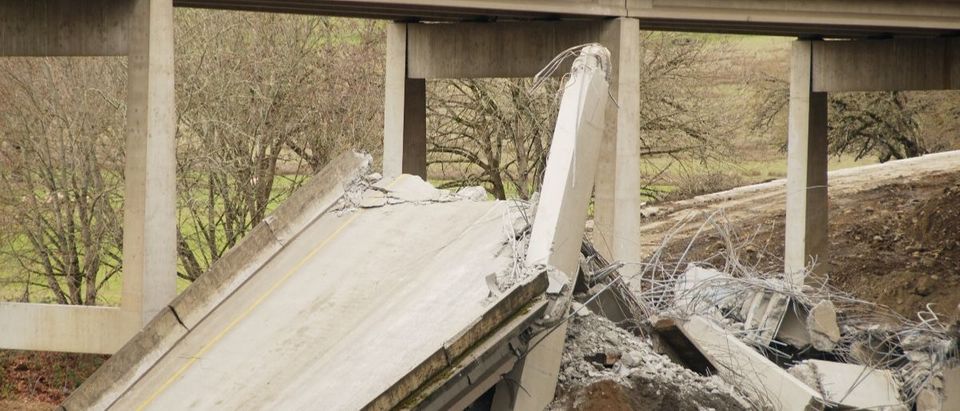On the top of President Trump’s to-do list for 2018 is a plan to upgrade and expand America’s failing infrastructure. With our nation’s roads, dams and power plants in collapse, the administration’s focus on infrastructure could not be more timely. According to the World Economic Forum, the United States continues to lag behind several countries such as Japan, France, United Arab Emirates and South Korea in infrastructure. Crumbling dams, the rising cost of traffic congestion, chronic underfunding and countless other preventable issues earned the United States a D+ on the American Society of Civil Engineers’ infrastructure report card. (I understand the D but why the +? We must be doing something right!)
Inarguably, increasing infrastructure investment would better our lives in many ways. It would shave off time on morning commutes, reduce injuries and fatal accidents, and make electricity and water utilities more affordable. But what is not sufficiently considered is that improvements to bridges, highways, waterways, and power systems accomplish good beyond our own convenience and finances. Maintaining innovative and safe infrastructure is imperative in protecting our national security.
President Dwight D. Eisenhower popularized this concept — that infrastructure plays a key role in national security. As a young officer in 1919 during a cross country, motorized military convoy, Eisenhower and his soldiers encountered inadequate bridges and limited access to clean drinking water. Unsafe conditions sank heavy trucks in mud and ran them off dirt roads.
If America’s infrastructure is a D+ today, Eisenhower must have given it an F back then. Moving troops and supplies across the country during wartime was simply a task too great; it could not be done safely or swiftly. He knew our infrastructure needed a big fix in order for our military to properly defend the homeland.
Luckily, much progress has been made since the mid-century. Inspired by his disastrous experience on that military convoy many decades before, President Eisenhower signed the Federal Aid Highway Act of 1956 into law. The law, also known as the National Interstate and Defense Highways Act, provided a 90/10 federal to state funding split for road construction. Today, national security remains a priority in keeping our infrastructure up to date and sufficiently funded.
According to Eisenhower, the goal was to address “the appalling inadequacies to meet the demands of catastrophe or defense.” His warning is no less relevant today. America’s infrastructure is ill prepared to handle the challenges we routinely face with nature – hurricanes, tornadoes, mud slides, wild fires, flooding – and the increasing threat from rogue nations such as North Korea and non-nation actors.
North Korean leader Kim Jong-Un remains unchecked in his efforts to build out his missile program and test nuclear weapons. However likely or unlikely an attack on the US mainland might be, without updated infrastructure, the disastrous effects of a ballistic missile strike against the US would multiply. Large-scale blackouts and roadway gridlock for evacuees are the least of the worries. Large scale suffering and an unrelenting stress on access to medical care would crush any hint of civility. The United States would be in chaos. These are not hyperbolic predictions of a dystopian reality. Sadly, this is possible. Much of this chaos could otherwise be avoided if Congress takes action to improve our infrastructure now.
If a North Korean missile attack seems too unlikely an example, just consider the largest natural disasters of this year. Hurricane Harvey dumped record-breaking rain on the Houston area and shut down the entire city because its drainage system was not prepared to handle a storm of such magnitude. Hurricane Maria finished off what Hurricane Irma managed to leave behind of Puerto Rico’s already failing and underfunded electric grid, leaving 3.5 million people without power on the island. Wildfire season in California has been the most destructive on record. Residents of areas evacuated by the fires sat for hours in bumper-to-bumper traffic watching brush and trees burn around them.
Or, consider a massive cyber security attack. Experts don’t believe we’re prepared to handle an event in which hackers would infect infrastructure control systems with malware, creating widespread power outages. President Trump’s recently-released National Security Strategy report has rightly drawn attention to that shortcoming, stating, “We will improve America’s digital infrastructure by deploying a secure 5G Internet capability nationwide.” Our adversaries are creating cyber capabilities specifically designed to attack our nation’s infrastructure and military. These are recognized vulnerabilities that must be addressed.
When Eisenhower pushed his highway legislation, he thought it was crucial for the federal government to foot most of the bill. The way he saw it, strengthening America’s infrastructure was rooted in uniquely national goals. The 90/10 federal to state funding share still holds today. So why then are essential infrastructure projects underfunded?
Our interstates are congested, perforated with potholes and unsafe driving conditions. We accept structurally deficient bridges and insufficient energy infrastructure. We need roads we can depend on to quickly move materials for our economy and evacuees during natural disasters. We need pipeline infrastructure and energy generators to power factories and commercial facilities, especially during a crisis. America needs infrastructure that will sustain and protect our society in wartime and in peace.
The current state of America’s infrastructure is not sustainable. I welcome President Trump’s plan to repair and maintain it because it’s absolutely critical to our national security—and I know General Eisenhower would agree.
Major General James “Spider” Marks (U.S. Army, ret.), is president of the Marks Collaborative.
The views and opinions expressed in this commentary are those of the author and do not reflect the official position of The Daily Caller.


